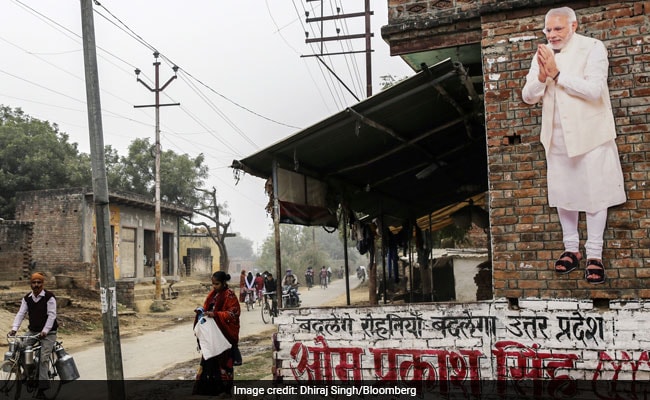


The Pradhan Mantri Gati Shakti program is yielding results, with projects like the Atal Setu bridge and the Mumbai Trans Harbour Link making significant progress. The government's focus on road and rail connectivity is expected to boost economic growth and improve the lives of citizens.
The Pradhan Mantri Gati Shakti program, launched in 2021, aims to transform India's infrastructure landscape. It focuses on developing holistic connectivity solutions across various modes of transport, including roads, railways, ports, airports, mass transit, and waterways. This integrated approach aims to reduce travel time, improve logistics efficiency, and drive economic growth.
Top 5 FAQs and Answers:
What are the key objectives of the Pradhan Mantri Gati Shakti program? Answer: To create a seamless multimodal transportation network, reduce logistics costs, boost economic growth, and improve the quality of life for citizens.
Which projects have made significant progress under the Gati Shakti program? Answer: Notable projects include the Atal Setu bridge in Bihar, the Mumbai Trans Harbour Link, and the Delhi-Mumbai Expressway. These projects aim to enhance connectivity and reduce travel time.
How does the Gati Shakti program contribute to economic growth? Answer: By improving infrastructure, reducing transportation costs, and facilitating seamless movement of goods and people, the program enhances overall economic competitiveness and productivity.
What are the benefits of the Gati Shakti program for citizens? Answer: Reduced travel time, improved accessibility, safer transportation, and enhanced economic opportunities are among the benefits citizens can expect from the program.
Where can I find more information about the Pradhan Mantri Gati Shakti program? Answer: You can visit the official website of the Ministry of Road Transport and Highways (MoRTH) for detailed information about the program, including project updates, progress reports, and related initiatives.
Links for Further Information:

The Life Insurance Corporation of India (LIC) has strongly refuted a report by The Washington Post claiming that its investment decisions were influenced by external factors and linked to the Adani Group. LIC clarified that all its investment decisions are taken independently in line with board-approved policies, and there has been no plan or document prepared to infuse funds into Adani companies. The state-owned insurer also denied any involvement of government bodies in its investment decisions, stating that it follows strict due diligence and acts in the best interest of stakeholders. This statement comes after LIC came under scrutiny for its exposure to the Adani Group in the past.

In a critical move, top officials in India's finance ministry pushed for state-owned Life Insurance Corporation of India to invest billions of dollars in the Adani Group, a controversial conglomerate headed by billionaire Gautam Adani. The proposal was made despite some officials being aware of potential risks and criticisms surrounding the group, including a recent indictment by US prosecutors for bribery allegations. Many have criticized the move as it involves the usage of middle-class savings and guaranteed returns for the benefit of a private company.

Despite being aware of the risks, officials of India's finance ministry proposed and fast-tracked a plan in May 2025 for the state-owned insurance and investment company, Life Insurance Corporation (LIC), to invest approximately $3.9 billion in an Adani group firm. This came at a time when the Adani group was facing corruption charges and reluctance from global banks to extend loans. The decision faced criticism from opposition leader Rahul Gandhi, as it has implications for the long-term savings and guaranteed returns of middle-class investors, who rely on LIC for low-risk investments. The Washington Post's investigation is based on documents and interviews with officials from LIC, the Department of Financial Services, and bank officials familiar with Adani group finances.

Australian batsman Travis Head opens up about his love for challenging batting conditions in the upcoming Ashes series, citing it as an opportunity to score freely and align with his natural aggressive style. While other top-order players have struggled on difficult Australian surfaces, Head has excelled and believes it will continue to be a challenge for England's batters. Former captain Steven Smith also chimes in, saying it will be tough for England if Australia continues to produce lively pitches.

Union Minister Kishan Reddy praised India's youth for their role in propelling the country towards becoming a developed nation by 2047. Addressing newly appointed government employees at the 17th Rozgar Mela, he emphasized the transformative potential of young citizens in shaping the country's future. With over 51,000 individuals receiving job offers through the Rozgar Mela initiative, Reddy credited Prime Minister Narendra Modi's leadership for India's rapid progress in various sectors and encouraged the new recruits to become torchbearers of progress.

The Baltimore Museum of Art has received a generous donation of over $10 million from the Stoneridge Foundation to support their art education department. This donation, the largest in the history of the museum, will fund various educational initiatives, including free family activities and teaching apprenticeships for nearby university students. This gift highlights the importance of museums in promoting education and cultural awareness and sends a message that supporting museums does not have to come only through schools. This funding will also create new positions for museum educators and help the museum better accommodate the numerous education requests they receive.

Tata Motors, one of India's leading automotive companies, has announced the introduction of a new safety feature for their popular SUV, the Nexon. Along with the Advanced Driver Assistance System, the company has also launched a Red Dark Edition of the Nexon and updated its technology. The Nexon has already earned top safety ratings and great commercial success, and this latest update further solidifies its position in the market as a safe, high-performance, and stylish SUV.

Piyush Pandey, the iconic figure in the Indian advertising industry, has passed away at the age of 70. With his powerful storytelling and campaigns that spoke to India in its own language, he transformed the country's advertising landscape. He was also the first Indian ad professional to receive the Padma Shri, a testament to his immense contributions to the industry. Despite stepping down from his role as Executive Chairman of Ogilvy India, his legacy will continue to inspire and shape the world of branding.

A recent RBI bulletin has revealed that the profitability of Indian companies has nearly tripled since the onset of the Covid-19 pandemic. The corporate profit-to-GDP ratio has reached a 17-year high, with large companies emerging as the primary contributors to this increase. This surge has been attributed to pandemic-induced pent-up demand, manufacturing resilience, and improved operational efficiency. However, despite this growth, corporate credit growth remains muted as firms are sitting on significant cash reserves, reducing their reliance on bank loans.

The Employees’ Provident Fund Organisation (EPFO) has announced five major changes to the Employees’ Pension Scheme (EPS) that will significantly impact the retirement savings of salaried employees. These changes include a revised method of pension calculation, an increase in the maximum pension limit from Rs 7,500 to Rs 15,000 per month, and a reduced minimum age for drawing pension from 58 to 50 years. These revisions aim to simplify pension access, increase benefits, and improve portability for members across the country. This move, following a Supreme Court directive, is expected to provide major relief to pensioners and ensure a fair and realistic computation for employees.